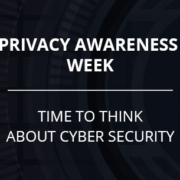Cybersecurity
Course Description
Everyone has a role to play in maintaining cybersecurity and addressing information security issues and challenges
Preventing Data Breaches
Everyone in the workplace has a role to play in responding to information security issues and challenges. The first step in reducing the risk of data breaches is to learn what they are and be aware of how they typically occur, so that appropriate measures can be taken to prevent them from taking place in the future.
This course surveys the most common information security issues and challenges, including direct observation, malware viruses, phishing, identity theft, spam and credit card skimming. It explores how mobile devices such as laptops and phones are vulnerable to theft. It also considers the Cybersecurity risks associated with working remotely, as well as the personal and professional issues associated with online activities such as using social media or storing information in the cloud. Each topic is explored in plain English, followed by a clear explanation of simple strategies for data protection.
Who is this training for?
This course is suitable for everyone responsible for handling information in the workplace, whether they are at work, at home or offsite.
Course Outline
- Module 1: Introduction
- Module 2: Protecting Work Information
- Module 3: Data security while working from home, in the office, and offsite









